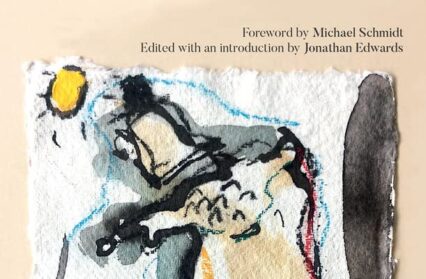As Joe Biden’s gleaming white American Teeth sparkle, Dai Smith delves into the Welsh history of Biden’s place of birth, Scranton.

Now that is what you call a Presidential smile: dazzlingly white, expensively crowned American teeth ready to gleam, accompanied by a crinkly-eyed light bulb flash of Irish geniality. When Joe Biden’s teeth beamed that smile out to the world whilst stood in front of his early boyhood home, I thought he looked the surefire winner he was about to become. All of that started in 1942, with his birth in Scranton, Pennsylvania.
There was a time when Scranton, the epicentre of Welsh emigrant life in nineteenth-century America, was as well known a place in Wales as the Rhondda was in America. The reverberations were long-lasting and personalised. I first heard the name Scranton on the streets of Tonypandy in 1952: the year that ten-year-old Joseph Robinette Biden’s family left his Lackawanna County birthplace to settle in the more salubrious Wilmington, Delaware. My auditory source was a boy of around the same age who was visiting his Welsh relatives that summer. He was our first real-life American: taller than us, blue-jeaned and in a striped sloppy-joe t-shirt, sneakered and crew-cut, and with a brace on his perfectible American teeth. He was from Scranton, a late part of the diaspora which had made Scranton and adjacent Wilkes-Barre in the northern Pennsylvanian anthracite coalfield the largest concentration of Welsh migrants and their descendants in the USA.
At its height by 1900, seventeen per cent of the native-born Welsh who had left Victorian South Wales for America, almost seventeen thousand of them, lived and worked in that region. The settlement’s name, as euphonious as a fingernail scratched across a blackboard, came from the entrepreneurial Scranton brothers: they had brought in Welsh knowhow in iron-making from the 1840s and from the 1860s Welsh skill in coal mining to make the cleft in the hills which were riven by the blackened Susquehanna river into a rail hub for the export of its abundant coal seams and for the import of immigrant labour. The industrial powerhouse of the centrally-located Scranton made it the 38th largest city in America at the beginning of the twentieth century. Incredibly, in its heyday seventy-five per cent of the population was born abroad or was first-generation American. The city peaked at around one hundred and forty thousand at the end of the 1930s but its economic decline, like that of the South Wales Valleys, was already set in and irreversible. Its reputation, similarly, was off-putting and even scary. The very name of Scranton was a by-word for a rough and hard existence. To be shunned if at all possible.
Scranton figured in the popular culture of twentieth-century America as surely, if not as happily, as Broadway or Hollywood. In the smash-hit, 1939 horror-spoof movie, The Cat and the Canary, the film’s stars, Paulette Goddard and Bob Hope have murderously chased down a dark and secret passageway until, when Goddard cracks with fear, Hope tells her that it could all be much worse. “How?”, she asks. “Well, we might be in Scranton”, he says. Even before that laughter-signalling putdown, the great comedian W.C. Fields had a regular misanthropic stage routine in which he told the audience in lugubrious tones that he had once entered a Beauty Contest; “Second Prize,” he drawled, “was two weeks in Scranton”. “First Prize,” he confided, “was one week in Scranton”. No wonder the Biden family left when they could. In 2020 the inhabitants were half in number what they were at their peak.
When I filmed there in 1982 for my six-part BBC2 series Wales! Wales? the social fabric of Scranton was a depressing simulacrum of the de-industrialising Valleys. The city, with its built-upon clumpy hills and the once all-encircling collieries, gave the superficial impression of being just like back home. By then, however, I also knew a lot more about how different it had actually been. Part of the purpose of the films had been to examine how apparently natural national concepts, such as “Welshness”, had been manufactured from the late nineteenth century out of a compound of material and cultural factors. The treasured formula to be arrived at was often reliant on a differentiated “other” for its own security of definition. In Scranton, for Welsh-Americans that “other” would be distinct, and allegedly lesser, migrant groups: Poles, Slovaks, Ukrainians, Italians and especially the Irish whose own numbers exceeded those of the Welsh. Resentment of each other was intensified not so much by the commercial, professional and residential segregation which saw the Welsh occupy the higher ground and the Irish start with a shanty town existence, as much as by the enforced hierarchy of superiority in positions and wages at the workplace itself. Thus, for one example amongst many, a mine first opened and worked by Welsh coalface labour in 1868 had become by 1910: “Managers and superintendents, Welsh; foremen and bosses, Irish; contract miners, Poles and Lithuanians; outside labourers, Slovaks, Ruthenians and Italians”.
In 1993 my former PhD student, now Professor Bill Jones turned his forensic thesis on Scranton and the Welsh between 1860 and 1920 into a masterly book, Wales in America, and therein the damning detail of discriminatory practices undertaken by the Welsh managerial and supervisory class against Irish miners and under-bosses was made devastatingly clear. Further, the bitterly sectarian divide between Nonconformist and Catholic religious persuasions and the political chasm between post-civil war (Welsh) Republicans and (Irish) Democrats underlined the lack of any so-called “Celtic” fellow feeling on the streets of Scranton. Instead, on those same streets from the 1870s, were physical confrontations, bodily assaults, arson, dynamiting of mines and church property, gun battles, silent assassinations and open murder: acts of anarchic mayhem by both sides. The solidarity of labour against the depredations of the coal owners did not always lead to strikes and union building in common. Most notably, for a while, the closeness of Welsh union representatives to the employers in pacts of mutual interest caused deep resentment amongst the shut-out Irish. To assert their own rights, and coming from rather different traditions of popular protests in rural Ireland, they formed a secret, oath-bound societies. These were the infamous, or legendary, “Molly Maguires”, intent through extreme intimidation on having natural justice or bloody revenge. Welsh counterparts, the “Modocs” and the “Chain Gang”, retaliated in like fashion. The infiltration of the Mollies by spies led to disbandment and the extra-legal hanging of twenty Irishmen. Open violence only slowly diminished thereafter, from the end of the 1870s into the twentieth century, when the upwardly mobile Welsh increasingly forsook work in the mines as mechanisation allied to cheap labour made the generational prospects less enticing.
Coming from Scranton, then, can mean more than one thing even if the origins of all those things lay in coal mining. The maternal great-grandfather of Joe Biden left famine-ravished Ireland for America and found individual success and social standing as a leader of Irish-Americans in Scranton. In 1904 he was elected to the Pennsylvania Senate as a Democrat. His occupation at the time was given as that of a mining engineer. Long before that, according to the family lore which Joe Biden cherishes, he had purportedly been an active organiser of the Mollies, enemy and scourge of the ascendant Welsh whose tyrannical mine foremen they had not hesitated to kill. Divergence, albeit less threateningly, continued. When the Great War broke out in 1914, Welsh-Americans trumpeted their support of the British Empire as a manifestation of their essential Welshness. Imperialist and royalist in sympathy, most of the Welsh at home could, thereby and with no contradiction involved, embrace their Britishness. In Scranton, Welsh-Americans could do exactly the same but by forefronting their allied American being. The elevation of David Lloyd George to be Prime Minister of the British Empire in 1916 was greeted with wild acclamation in Scranton as being proof positive of their twinned cultural destiny as Welsh-Americans. But in that same year of 1916 Irish rebels instigated the Easter Rising to proclaim the Irish Republic, an act celebrated more at that time in America than in Ireland itself. However, by the time Lloyd George stepped down as Prime Minister in 1922, Ireland had passed through the storm of civil war and definitively left Britain and its Empire behind them. In 1923 Lloyd George visited Scranton for the last Welsh-American Hurrah but that, too, was now another country, one in other than any Welsh hands and way beyond any lingering British destiny. Still, memories run deep. Joe Biden was recently hailed on his way into his office by a journalist who introduced himself as being from the BBC. Shining white teeth, American teeth which can also bite, were bared and the follow-through barb was only mitigated by that trademark disarming grin as Biden walked away, saying as he went: “I’m Irish”. It is not too difficult to discern at which historical well he dips his particular memory bucket.
And yet, things can converge, too. As they did in November 1941 when How Green Was My Valley was deliberately premiered in Scranton. There was great excitement amongst those of Welsh descent who watched the film and celebrated it afterwards by parading through downtown Scranton, singing all the way home just like in the movie. Not singing but cheering on the attendant movie stars would have been the Bidens, with sleeping Joe still in his mother’s womb, for this was an Irish triumph as well as a Welsh fairy tale. The movie would sweep the board for Oscars that year… Best Film, Best Director, Best Cinematography amongst the five awarded to it, leaving both Citizen Kane and The Maltese Falcon in its Hollywood Hokum wake. Its director was the Irish-American cinematic genius, John Ford. Its star was the lustrous Maureen O’ Hara, and much of the surrounding cast were members of Ford’s Irish-American stock company of actors. So much so, that the scriptwriter Philip Dunne, more a documentary realist than magical mythmaker, complained to Ford about the undue Hibernian influence on accents and music, to which John Ford replied: “Ah, go on! The Welsh are just another lot of micks and biddies, only Protestants”.
So, here’s to Joe Biden, with the whitest American teeth, the President-Elect from Central Casting, and now self-appointed healer of deep divisions, past and present. May the warmth of the smile radiating from his chosen American teeth trump any glint in his ancestral Irish eyes so far as us Welsh micks and biddies are concerned. And, yeah, he does, after all, owe Neil Kinnock a rhetorical favour or two.
Dai Smith’s latest novel, The Crossing (Parthian, 2020), is the imagined story of American Wales.










